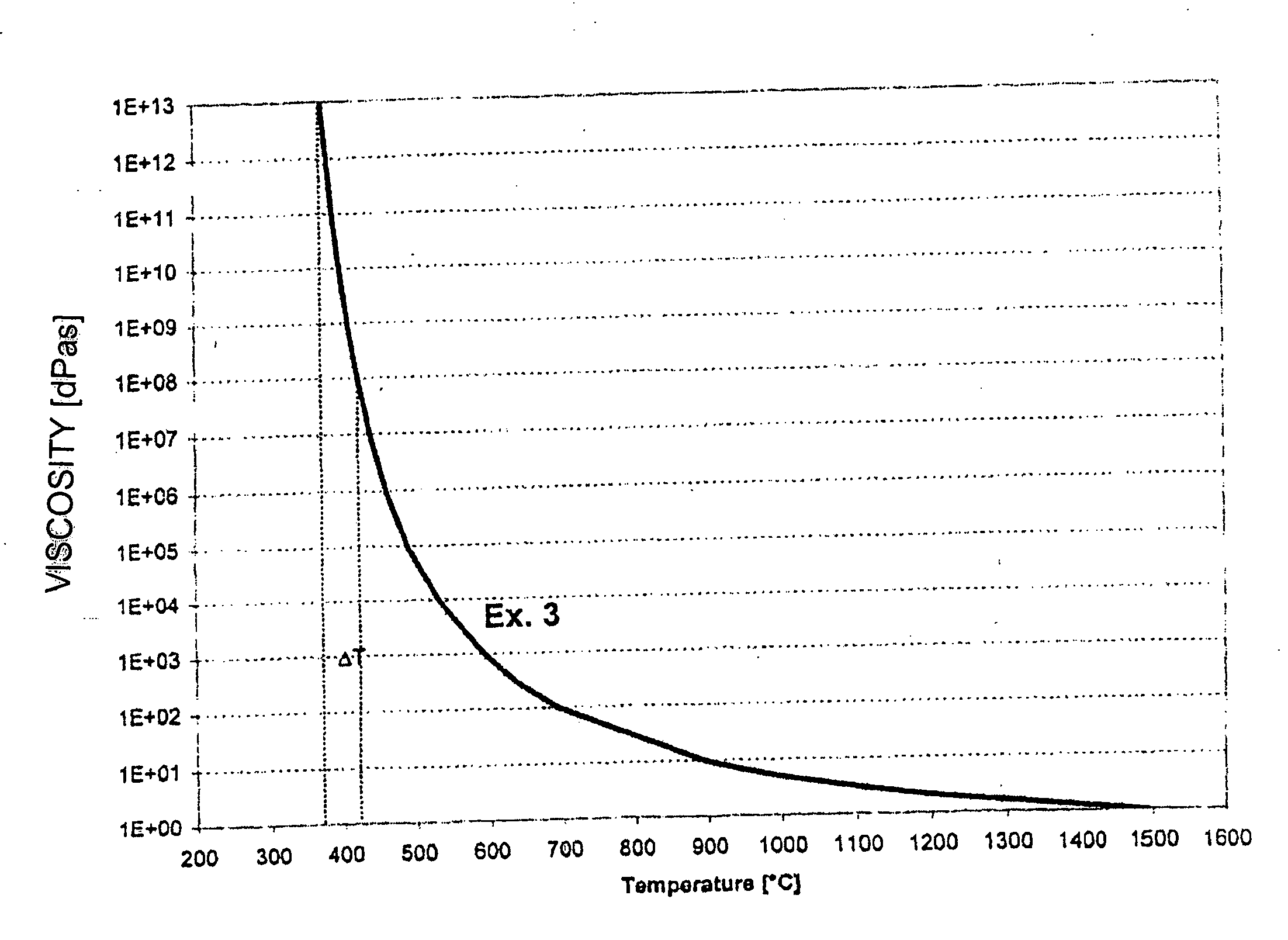Optical glass and process for making precise-pressed optical elements therefrom as well as said optical elements
a technology of optical glass and precise pressing, which is applied in the field of lead-free and lithium-free optical phosphate glass, can solve the problems of increasing the price pressure of further processors on glass manufacturers, the use of precision equipment with high-quality and therefore expensive mold materials, and the drop in the volume demand of raw glass. , to achieve the effect of good melting and processing properties, low transformation temperature and sufficient crystallization resistan
- Summary
- Abstract
- Description
- Claims
- Application Information
AI Technical Summary
Benefits of technology
Problems solved by technology
Method used
Image
Examples
examples
[0074] Tables IIa and IIb and IIIa and IIIb describe exemplary embodiments of the invention in the preferred composition range and also a comparative example. The glasses described in the examples were produced as follows:
[0075] The raw materials for the oxides, preferably the corresponding carbonates, the phosphate content, preferably as complex phosphates, were weighed out, one or more refining agents, such as for example Sb2O3 were added, and then the components were thoroughly mixed. The glass batch is melted down at approx. 1150° C. in a continuous melting unit, then refined (1200° C.) and homogenized.
[0076] The glass can be poured at a temperature of approximately 950° C. and processed to give the desired dimensions. Experience has shown that the temperatures can be reduced by at least approx. 100 K in the large-volume, continuous unit and the material can be processed using near net shape pressing processes.
TABLE ICOMPOSITION OF A 100 KG BATCH OF RAW MATERIALSUSED TO MAKE...
PUM
| Property | Measurement | Unit |
|---|---|---|
| Abbé number νd | aaaaa | aaaaa |
| Abbé number νd | aaaaa | aaaaa |
| refractive index | aaaaa | aaaaa |
Abstract
Description
Claims
Application Information
 Login to View More
Login to View More - R&D
- Intellectual Property
- Life Sciences
- Materials
- Tech Scout
- Unparalleled Data Quality
- Higher Quality Content
- 60% Fewer Hallucinations
Browse by: Latest US Patents, China's latest patents, Technical Efficacy Thesaurus, Application Domain, Technology Topic, Popular Technical Reports.
© 2025 PatSnap. All rights reserved.Legal|Privacy policy|Modern Slavery Act Transparency Statement|Sitemap|About US| Contact US: help@patsnap.com

